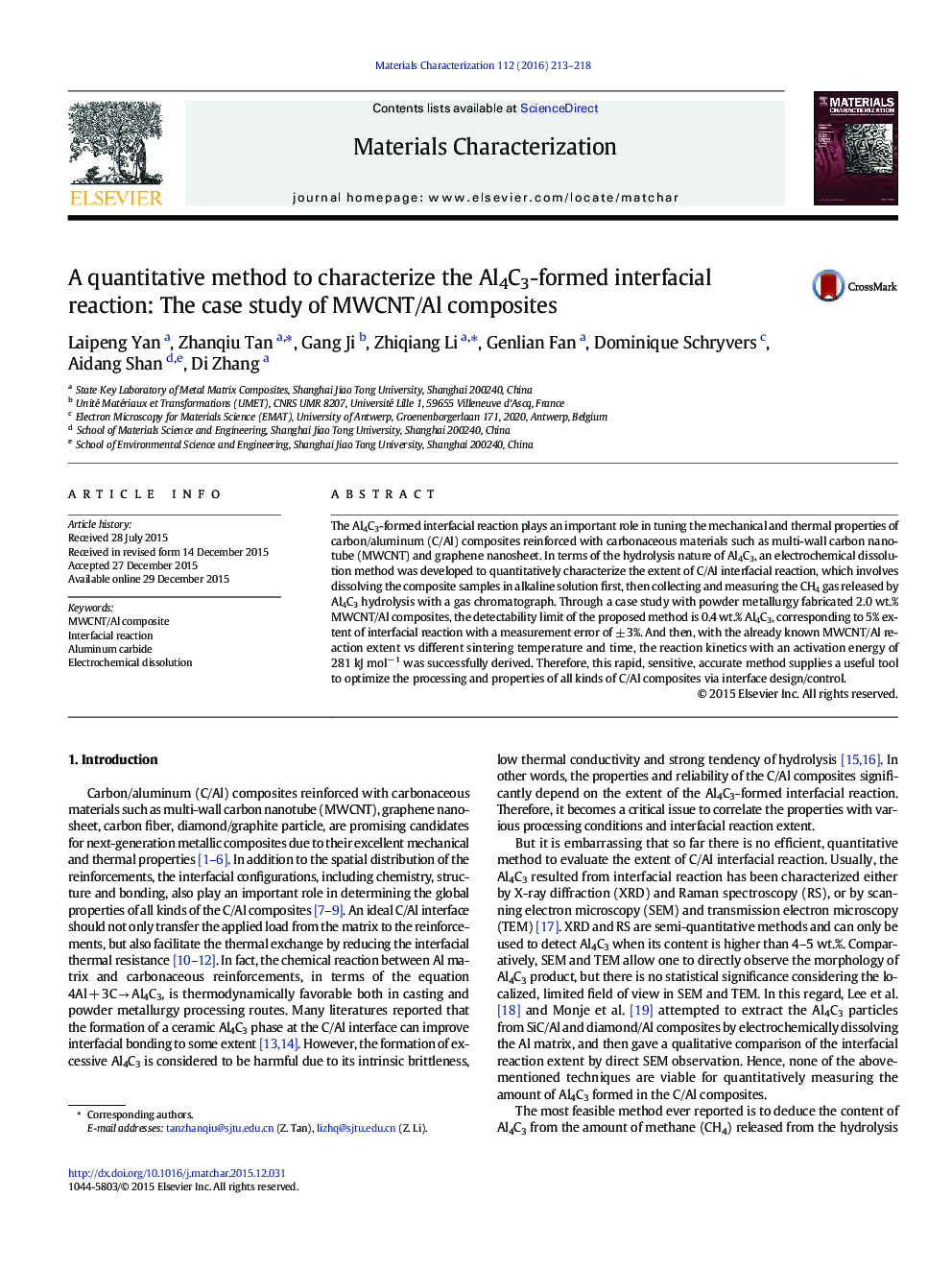| کد مقاله | کد نشریه | سال انتشار | مقاله انگلیسی | نسخه تمام متن |
|---|---|---|---|---|
| 1570617 | 1514375 | 2016 | 6 صفحه PDF | دانلود رایگان |

• A quantitative method to test interfacial reaction of C/Al composite was developed.
• An in-house set-up for the quantitative method was designed.
• The interfacial evolution of MWCNT/Al composite was characterized.
• The kinetics of MWCNT/Al interfacial reaction was analyzed.
The Al4C3-formed interfacial reaction plays an important role in tuning the mechanical and thermal properties of carbon/aluminum (C/Al) composites reinforced with carbonaceous materials such as multi-wall carbon nanotube (MWCNT) and graphene nanosheet. In terms of the hydrolysis nature of Al4C3, an electrochemical dissolution method was developed to quantitatively characterize the extent of C/Al interfacial reaction, which involves dissolving the composite samples in alkaline solution first, then collecting and measuring the CH4 gas released by Al4C3 hydrolysis with a gas chromatograph. Through a case study with powder metallurgy fabricated 2.0 wt.% MWCNT/Al composites, the detectability limit of the proposed method is 0.4 wt.% Al4C3, corresponding to 5% extent of interfacial reaction with a measurement error of ± 3%. And then, with the already known MWCNT/Al reaction extent vs different sintering temperature and time, the reaction kinetics with an activation energy of 281 kJ mol− 1 was successfully derived. Therefore, this rapid, sensitive, accurate method supplies a useful tool to optimize the processing and properties of all kinds of C/Al composites via interface design/control.
Journal: Materials Characterization - Volume 112, February 2016, Pages 213–218